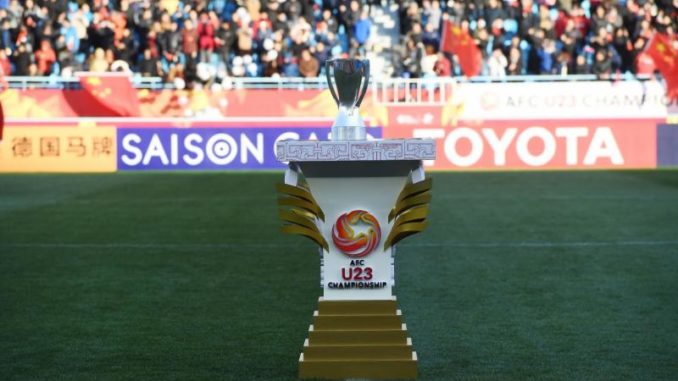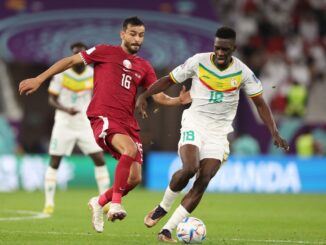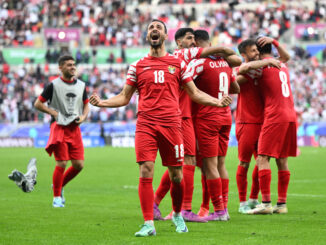
A new decade of Asian football is upon us, and with it we look forward to what the next ten years has to offer with the biennial AFC U23 Championships that promises to showcase the talent that’ll undoubtedly make it.
Much more, in terms of significance, than a run of the mill youth tournament, what effectively is the mini-Asian Cup on the AFC calendar is primed instead to set the tone of the continent’s football for the years ahead.
The importance of the tournament can be quickly measured by the coaching staff in attendance. Five of the sixteen coached at last year’s senior Asian Cup, whilst Thailand’s Akira Nishino also takes up what is becoming a prevalent trend of head coaches juggling senior and U23 managerial duties.
Until recently this was a pretty unfamiliar concept; a senior coach having to balance youth development alongside the first team, yet in Asia, as is increasingly becoming the case across a spectrum of football practices, nations are becoming ever more proactive in their attempts to step ahead of the global competition.
It’s an approach that has divided opinion, with naysayers cynically suggesting it’s a cheap way out for their respective football associations. However the benefits of having one coach overseeing both senior and U23 sides has broad plus points.
It aids in consistency, in both playing style and expectation, removing an increasingly unnecessary distinction in national team call ups that regularly fluctuate between age phases. It also brings forward the priority of Olympic qualification (top three finalists this month will ensure a place at this summer’s event).
While overlooked by large parts of the of the world, the Olympics continues to be held in high regard by much of Asia, on par with the Asian Cup and in some cases even the World Cup.
This has been ramped up yet another level for Japan, who’ve placed increased expectation on their squad upon their hosting of the games this northern summer in Tokyo.
It was widely presumed upon Hajime Moriyasu’s appointment back in 2018 that his primary target set by the JFA was indeed the Olympics, and despite their run to the Asian Cup final 12 months ago, eyes were inevitably set on 2020.
Japan’s squad makeup remains crowded for it, with over 50 players realistically staking a claim for any given national call up.
It’s doubtful even Moriyasu himself has a real clue of what his best team actually is, having run through a raft of changes over the last year, including a congested spell last summer where he oversaw two separate squads playing in home based friendlies and the Copa America, while a third was deployed at the prestigious Toulon youth tournament within a matter of weeks
Ironically, the squad that Moriyasu didn’t oversee that summer (that made the final in Toulon) is broadly similar to the one being blooded in Thailand. With the tournament falling outside the typical FIFA international calendar, player availability is limited to those either on the periphery at their clubs in Europe, or based at Asian clubs in mid or end-of-season breaks.
Come the Olympics later this year, Japan’s squad will be in stark contrast to the one heading to the U23s, which is one predominantly made up of domestic J.League players.
While there can be promising cases for Olympic inclusion put forward for the likes of midfield metronome Ao Tanaka and lively winger Keita Endo, it doesn’t hide the fact that this squad has been drained of some of its potential spark given the success of Japanese talent flooding into the European market over the last year.
Whilst this will have a detrimental knock-on effect to the calibre of players at the tournament as a whole, it does instead provide an ideal shop window for those wanting to make the jump to Europe themselves, and from it a tournament setting to build into the current senior setup in the ongoing World Cup qualification cycle.
Previous AFC U23 Championships have promoted the likes of Kwon Chang-hoon, Shoya Nakajima and Kaveh Rezaei in recent years, all of whom have been able to engineer moves to Europe off the back of eye catching tournament performances.
The 2018 edition was a tale of unexpected success, with the previously unfancied Uzbekistan (as champions), Vietnam and Qatar all impressing into the latter stages.
The stars in China in 2018, the likes of Almoez Ali, Akram Afif and Nguyen Quang Hai, have already proved the benefit of tournament time come last year’s Asian Cup and will look to make their own onward passages to Europe in the coming transfer windows, with the two Qataris in particular mooted for moves in the coming week.
As Qatar has proven, success at youth level can transition seamlessly into the senior team, another reason why FAs have embraced a dual managerial capacity, effectively to harness a winning mentality from its earliest point and guide the feeling through to the first team.
After an impressive U20 World Cup last summer, Australia’s youth development ship is starting to turn after missing the mark on many occasion over the last decade.
A deficit of talent coming through in the last few years has forced the FFA’s hands somewhat to focus on transition of talent, yet whether Graham Arnold can work miracles immediately given the relative lack of experience in the group (only two players have senior caps in the squad, compared to Japan’s fifteen) is still a lingering question.
A much coveted conveyor belt approach, to have young players replenish seniors on a regular basis, is something that many national teams find hard to muster, often attempting to hop from one “golden generation” to another without providing fluidity.
Even the likes of Qatar, who have demonstrated a successful method in bringing through youth to senior level are starting to hit bumps in the road. With World Cup qualification assured for 2022, the biggest challenge on Felix Sanchez’s hands is to keep supplementing their Asian Cup winning squad with the next phase of development.
While the likes of Yusuf Abdurisag have sparkled domestically and in early World Cup qualification, he’s in the minority. Qatar will need more from the next group off the Aspire production line if they are going to continue on their crest of a wave over the next two years.
Outside the regular bigger names of Asian football, there’s also the anticipation that we’ll discover that next big thing, be it individual players or particularly special teams that will define the next decade.
Bahrain, champions of two regional competitions over the last twelve months, boast a significantly experienced squad. While Jordan, in APOEL based duo Musa Al-Taamari and Omar Hani, and highly rated keeper Abdallah Al-Fakhouri, have a sprinkling of individual quality that will be interesting to watch.
The evolution of Saudi attackers Firas Al-Buraikan and Abdulrahman Ghareeb in a creative Saudi Arabia side will be fascinating two years on from their U19 title, while trepidation over Jeong Woo-yeong’s prospects in South Korean red will likely reverse if he can illustrate his potential that took him to Europe.
A final aspect to consider is the tournament hosting and spectacle itself. Thailand take on hosting privileges, with a mind to prove itself as a possible suitor for future senior Asian Cups and Women’s World Cup bids going forward.
The introduction of VAR to the tournament for the first time gives the hosts a perfect opportunity to gel its off-field stadium management with on-field technology that’ll no doubt continue to play a part across the globe in the coming decade.
The star dust provided by Supachai Jaided and Supachok Sarachat should add much needed local interest as the hosts aim to make the knockout stages at this level for the first time.
The U23 Championships as a whole is a strange beast, but anything but a run of the mill youth tournament jolly. Few may take notice of it at the time, but as the years elapse, its relevancy for the continent’s football landscape becomes pertinent.
With Olympic qualification, transfer scouting, philosophy building and senior managerial jobs on the line, the coming month will give us a large clue as to which nations and players we’ll all have our eyes on in the coming years, and which still have plenty to do.
Listen to Paul Williams and Michael Church on Episode 48 of The Asian Game podcast talk about their love of the AFC U23 Championships.




